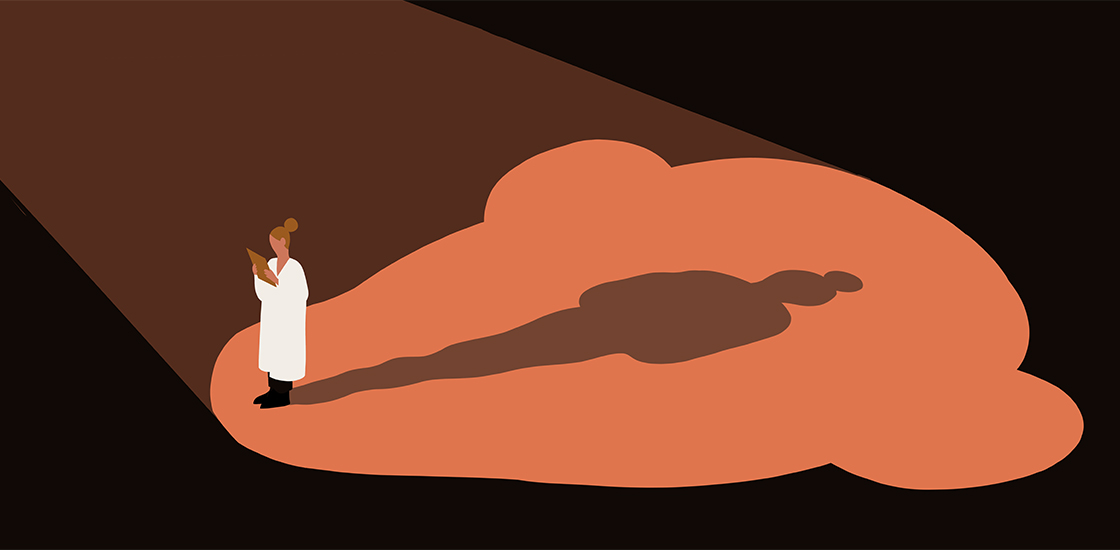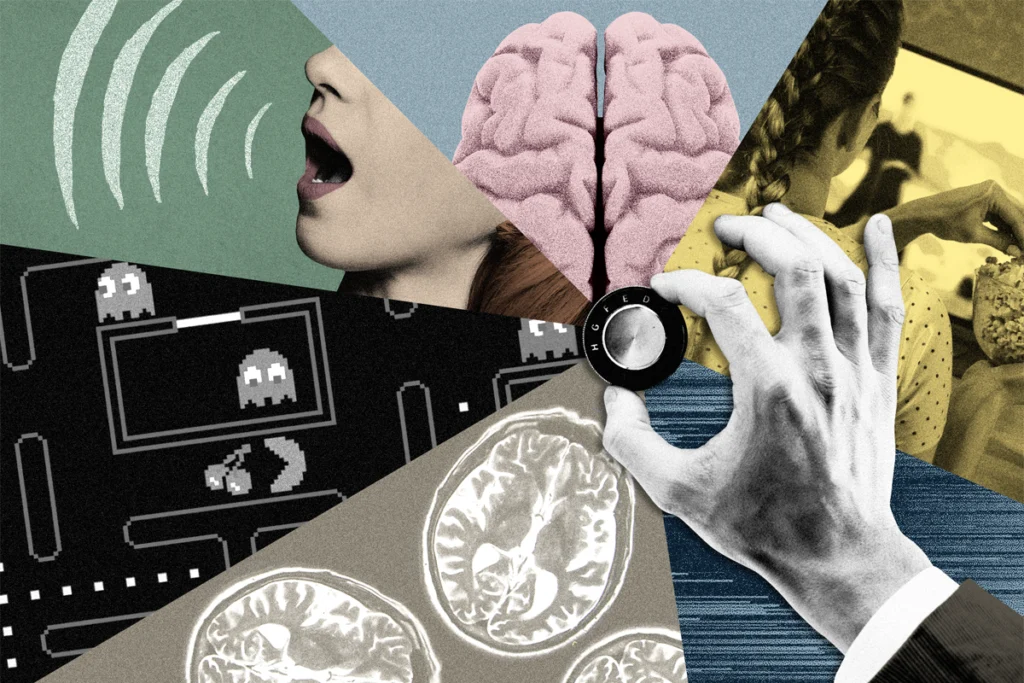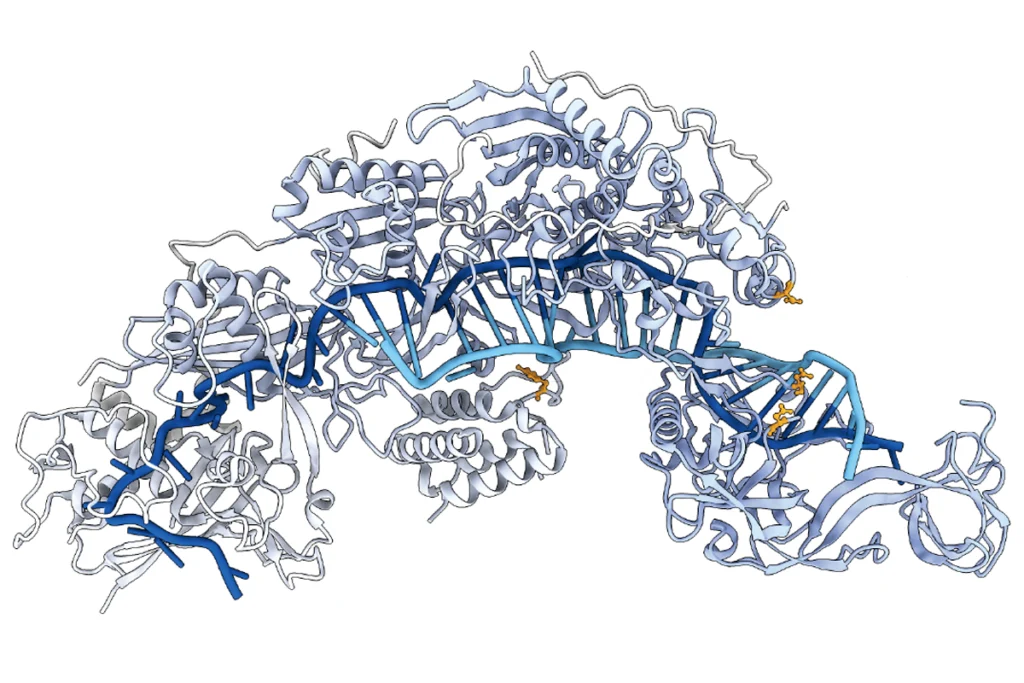The Simian Collective was born in a conference center in 2019.
Cory Miller, associate professor of psychology at the University of California, San Diego, and Michele Basso, professor of psychiatry and neurobiology at the University of California, Los Angeles, had brought together all eight primate neuroscience labs in the region for a one-day meeting.
“Part of it was to get to know each other a little bit more, have a little more community,” Miller says.
But they also wanted to talk about the future of their field. U.S. Senator Cory Booker had just introduced a congressional bill to place limits on primate research, and researchers who work with monkeys were nervous about what that would mean for their work.
“A lot of us had been trained to say, ‘Well, that’s for someone else to take care of,’” Miller says. “Like, ‘Keep your head down and just do your science.’”
Miller, Basso and their colleagues increasingly felt that just doing their science wasn’t going to be enough, Miller says. After their initial meeting, they decided to organize more broadly, calling on “a mishmash of people” who engage in and support primate research and want others to understand its importance.
The resulting group, which they dubbed the Simian Collective, hosted its first conference in early May 2022, bringing together more than 200 researchers and advocates. Miller spoke to Spectrum about the group’s goals, why primate research is important in autism studies and other fields, and what they want the world to know about their work.
This interview has been edited for length and clarity.
Spectrum: What were your initial goals for the Simian Collective?
Cory Miller: We really were thinking about what our community needs. And the thing that we’re really lacking is training for young scientists about the neuroethical issues around animal research and how to advocate for it. What are the arguments and counter arguments? And how can they get involved in sharing that message?
Primate research is very challenging. It’s very, very difficult. And as a collective, we can do a lot more for each other — not just in sharing resources and protocols, but also in advocating for why we do this research.
S: Why do you think the primate research community hasn’t done that before?
CM: We’ve often had this feeling — we call it the argument of self-evidence — that the significance of primate work is just so obvious that you don’t really need to make the argument at all. That attitude has led the field to this point where people question, “Why do you even need to do this?” They ask it about animal research in general, but especially about research in primates.
Many of us were also trained to never engage, out of fears of attacks from animal rights extremists. [Editor’s Note: Such groups repeatedly threatened primate researchers at the University of California, Los Angeles, in the early 2000s, setting fire to one researcher’s car and flooding the house of another. They also attempted to leave a Molotov cocktail at a researcher’s home but mistakenly left it with an elderly neighbor. The group that claimed responsibility for the majority of attacks has been designated as a terrorist group by the U.S. Department of Homeland Security.]
The outcome of that lack of engagement is that, essentially, the opponents of animal research are winning that space. There are multiple bills in Congress to limit animal research that are gaining varying amounts of traction. And, at the very least, people hear that argument a lot more than they hear our side.
Researchers have to weigh the risks and make choices about what they think they should do. But I think that, as a group, we do need to advocate more. We do need to be on the front lines — making the points about why what we do is important, and the ethical considerations when doing animal research.
S: What were you hoping to get out of the meeting?
CM: The real heart of it is advocacy and neuroethics, and hearing from patients whose lives are greatly enhanced because of the primate research that we do.
For example, brain-computer interface (BCI) devices and deep-brain stimulation implants and all of these other really revolutionary tools have to be tested in animals. And generally, they have to be tested in monkeys because they and humans have parts of the brain that don’t exist in other species. Many of the things that we primates do cognitively really can’t be modeled in other animals.
And so hearing from people who have benefited from that technology adds a personal element. You can talk abstractly about how tetraplegic patients with BCI implants can now do really cool things with robot hands. But to hear someone talk about their experience is an important message for researchers to take home, and then they can share that with a wider audience.
S: What else do you want people to know about primate research?
CM: Many people don’t really know about the level of care that goes into the work that we do. Most of us researchers are very deeply involved with the animals. All of the labs that I know go way beyond what the animal regulations are in terms of care. Multiple federal and state regulatory bodies track the work that we do, and we go beyond those requirements to make sure the animals are getting the best possible care that they can get. And those are the kind of messages that people don’t seem to hear.
I always say, if you ask a room of primate researchers how many have stayed overnight for multiple days to care for animals, everyone in that room would raise their hand. And it’s not because of the experiment; it’s because the people really care. We really get attached, and we value those monkeys.
S: How do you and your colleagues plan to get your messages across to the public?
CM: It’s not just the public; it’s also other scientists.
Over the past decade or two — largely because of genetic technologies out there — there are now mice and Drosophila models of countless diseases. And primate research has kind of been pushed to the side. And so, in the same way that we need to advocate for primate research generally, we need to reposition ourselves within the scientific spectrum and emphasize that critical role that primate research serves there. Because the zebrafish model of autism is just kind of missing something. They just don’t have the same areas of the brain.
So the next phase of what we’re trying to do has more to do with education and advocacy — building one-day workshops that we could bring to various universities around the country to help other researchers understand the importance of primate research.
And then there’s also the political side. I mean, before COVID-19 derailed us, a number of us had planned to have briefings for the U.S. Senate and the House of Representatives. That was all scheduled for May 2020. So that all ended, but we have a lot of interest there, especially from early- or mid- career scientists.
S: What do you want the future of nonhuman primate research to look like?
CM: The idea that we don’t need animal testing for biomedical research is just not reasonable. You can’t model biological things if you don’t know the biological basis for them. And so, this idea that you can just eliminate animals, including primates, from research — that argument just needs to be cut out.
What I would hope is that is that the significance of animals in that process is respected. You would think that, after the COVID-19 pandemic, people would understand the role that animals played in the fact that we all got vaccinated so quickly. That never would have happened if we just had computer simulations; we needed animals for that.



